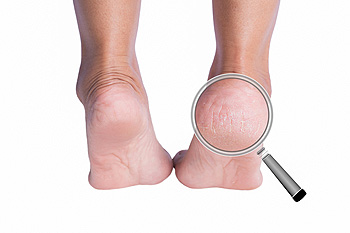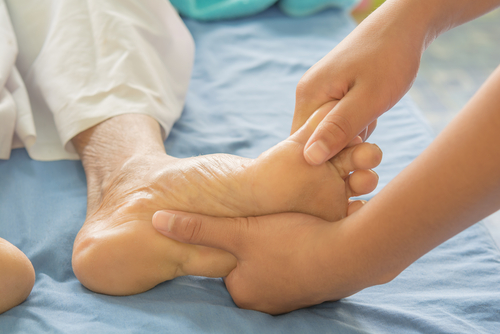
The metatarsals are the long bones in the foot that connect the ankle bones to the toes. Because the metatarsals bear your weight every time you stand up, they can become painful. This is known as metatarsalgia and is commonly felt in the ball off the foot. The main causes are arthritis, wearing high-heeled or other shoes that force the weight onto the metatarsals, and performing high-impact sports. Treatment options include icing the feet, changing the style of footwear, and turning to lower-impact activities, like swimming. Many people with metatarsalgia may need to lose a few pounds, which helps lighten the load on the metatarsals. And for some people, wearing orthotics can help to cushion the impact on these bones. If taking these measures does not bring relief, it is wise to make an appointment with a podiatrist for an examination and proper diagnosis. More advanced treatment options may be suggested.
Foot Pain
Foot pain can be extremely painful and debilitating. If you have a foot pain, consult with one of our podiatrists from Lewis Wolstein, DPM, P.C. & Associates. Our doctors will assess your condition and provide you with quality foot and ankle treatment.
Causes
Foot pain is a very broad condition that could be caused by one or more ailments. The most common include:
- Bunions
- Hammertoes
- Plantar Fasciitis
- Bone Spurs
- Corns
- Tarsal Tunnel Syndrome
- Ingrown Toenails
- Arthritis (such as Gout, Rheumatoid, and Osteoarthritis)
- Flat Feet
- Injury (from stress fractures, broken toe, foot, ankle, Achilles tendon ruptures, and sprains)
- And more
Diagnosis
To figure out the cause of foot pain, podiatrists utilize several different methods. This can range from simple visual inspections and sensation tests to X-rays and MRI scans. Prior medical history, family medical history, and any recent physical traumatic events will all be taken into consideration for a proper diagnosis.
Treatment
Treatment depends upon the cause of the foot pain. Whether it is resting, staying off the foot, or having surgery; podiatrists have a number of treatment options available for foot pain.
If you have any questions, please feel free to contact our office located in Co-Op City, NY . We offer the newest diagnostic and treatment technologies for all your foot care needs.





